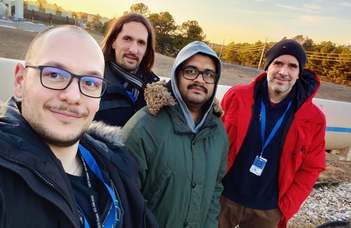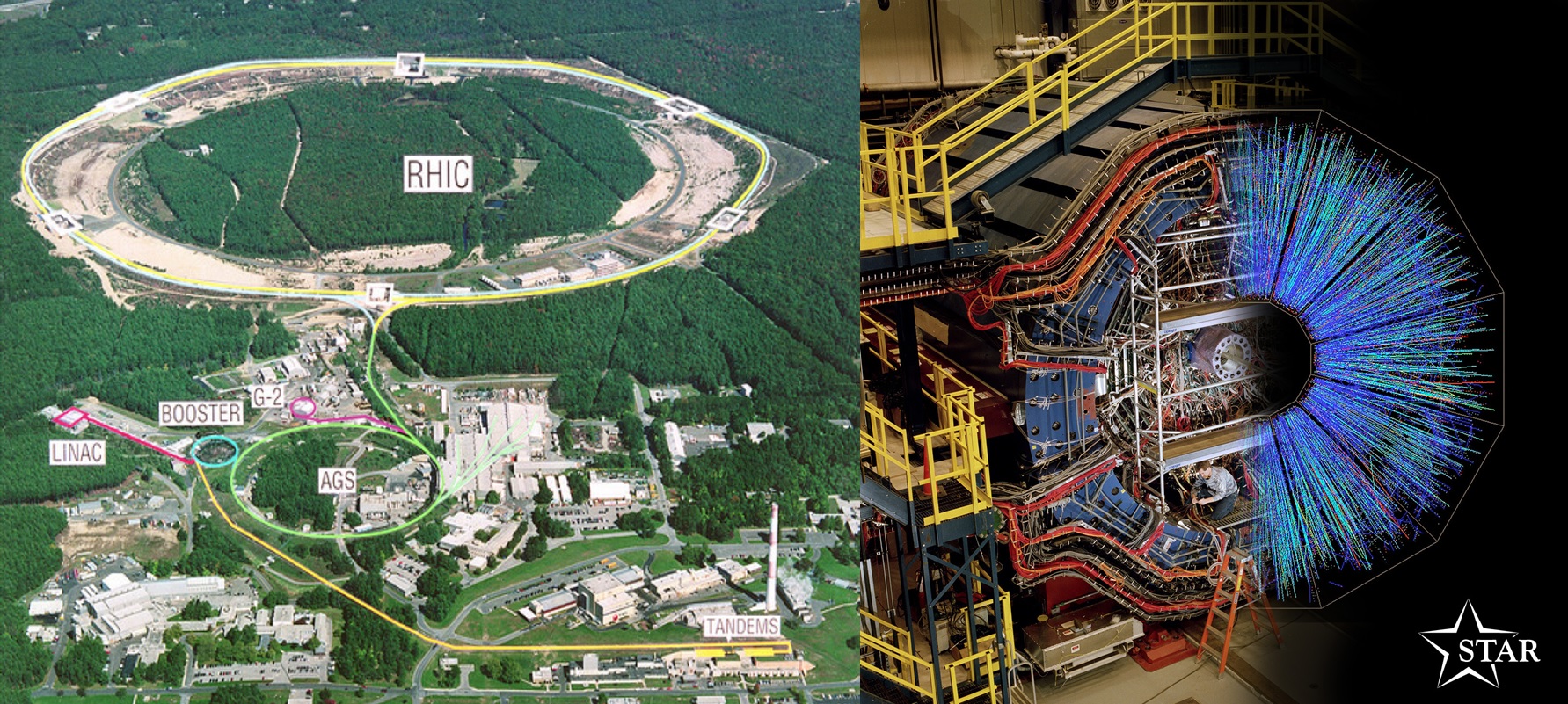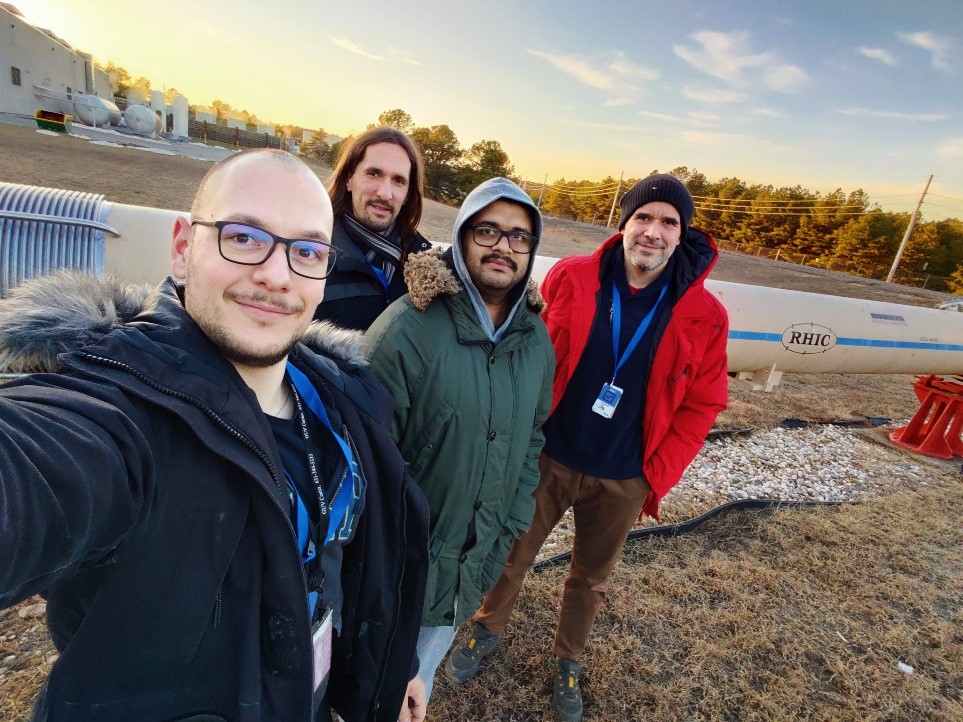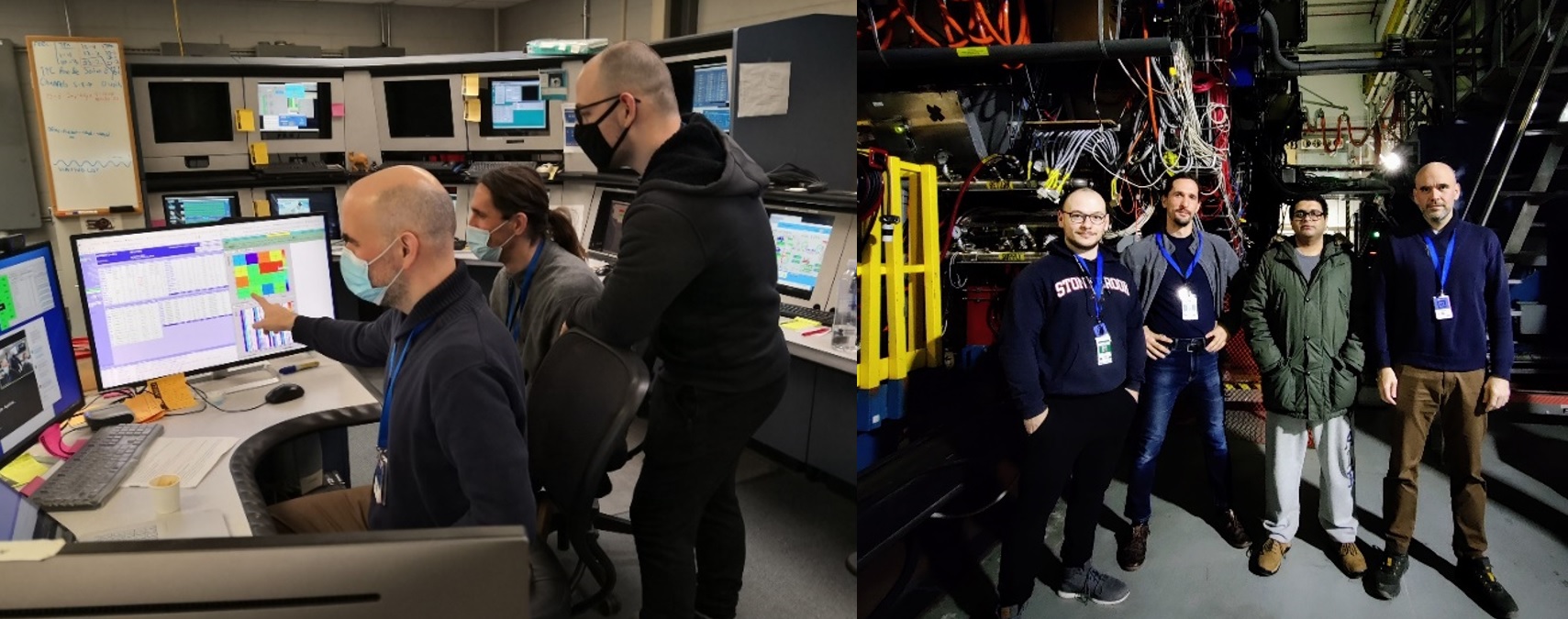ELTE physicists work in the largest particle accelerator in th US

In the rings of the Relativistic Heavy Ion Collider (RHIC), New York, measuring several kilometres in circumference, the atomic nuclei accelerated to tremendous energy are made to collide with each other. When the large nuclei (heavy ions) collide with each other, the protons and neutrons constituting them can melt, which creates a new substance called the quark-gluon plasma, or quark matter that last existed at the birth of the universe. When protons collide, different types of processes take place. It is an important question whether the quark matter also develops then, but the aim of these experiments is a better understanding of the internal structure of the proton: how important constituents the gluons holding the quarks together are and how the angular momentum of the proton is caused by the spin of the quarks and gluons found in them.

The building complex of RHIC at the National Laboratory in Brookhaven (left); the STAR experimental equipment and a specific nuclear collision superimposed on each other (right).
At present, one of the main research questions is what roles the components of the protons (i.e. the ‘valence’ or binding quarks that make up the proton, the gluons that hold them together, and the quark-antiquark pairs that continuously develop from quantum fluctuations) have in the different kinds of interaction energy, and what proportion of the energy and spin of the proton is caused by the individual constituents.
All this also helps acquire a better understanding of the strong interactions that hold the atomic nuclei together.
To this end, RHIC investigates collisions of polarized (i.e. unidirectionally spinning) protons. This requires very special equipment, including the so-called Siberian snakes, which can make the protons spin in the required direction during acceleration and the orbital motion. This is important because by observing in which direction the particles fly out from the collision of the protons that are rotating in a known (i.e. non-random) direction it is possible to identify how the components of the proton contribute to the spin of the whole proton – a mystery that awaits to be unravelled for nearly a hundred years.

The ELTE team in front of a displayed element of the RHIC acceleration ring; from left to right:
Dániel Kincses, Márton Nagy, Ayon Mukherjee, and Máté Csanád.
Data collection for major experiments, such as STAR, is usually performed by collaborating researchers, who are responsible for communicating with the control team of the accelerator, continuously monitoring the condition of the detectors of the experiment, managing low and high voltage systems, starting and stopping data acquisition, and managing superconducting magnets of several megawatts. Since the experiments run continuously, the researchers work in three shifts a day forming teams of five. In 2022, the participants of the
ELTE STAR-Hungary research group – Máté Csanád, Dániel Kincses, Ayon Mukherjee, Márton Nagy, and Srikanta Tripathy – took part in the measurements both in person and online. For this reason, the members of the Hungarian team spent several weeks at the National Laboratory in Brookhaven, working as shift managers and detector operators. Tripathy Srikanta, followed the measurements online, remotely monitoring the quality of the data recorded by the detectors.
 Researchers from ELTE while managing the STAR data acquisition (left); and inside, at the accelerator, next to the detectors of the STAR experiment (right).
Researchers from ELTE while managing the STAR data acquisition (left); and inside, at the accelerator, next to the detectors of the STAR experiment (right).
The ELTE Team was engaged in putting into operation the equipment called Event Plane Detector, which was the first step in these developments. It plays an important role not only in the proton-proton but also in the nucleus-nucleus collisions. Another important task of the researchers from ELTE is to analyse the data, with special regard to those produced by the femtoscopic measurements. Furthermore, Máté Csanád, for example, supervised the data archiving in the 2020-21 period of the experiment, while Srikanta Tripathy was a member of the committee responsible for the presentations held on behalf of the experiment.
What's new in the STAR project?
For the period beginning with 2022, STAR has made plans for considerable developments to extract as much information as possible on the structure of protons from the distributions of forward scattering particles. In the past, it was only possible to explore the particles that flew out in a direction that was nearly perpendicular to the direction of the collision. New developments include the Forward Silicon Tracker, the Forward Calorimeter System, and the Small-Strip Thin Gap Chamber, all of which are meant to analyse particles flying out nearly parallel to the direction of the collision.
The research group operates in the field of Astro and Particle Physics of the Higher Education Institutional Excellence Programme, and their participation in the STAR experiment is also supported by NKFIH/OTKA FK-123842, K-138136, and 2019-2.1.11-TÉT-2019-00080 projects.

